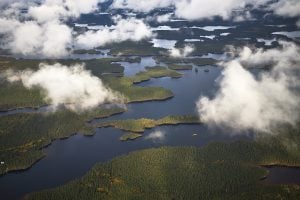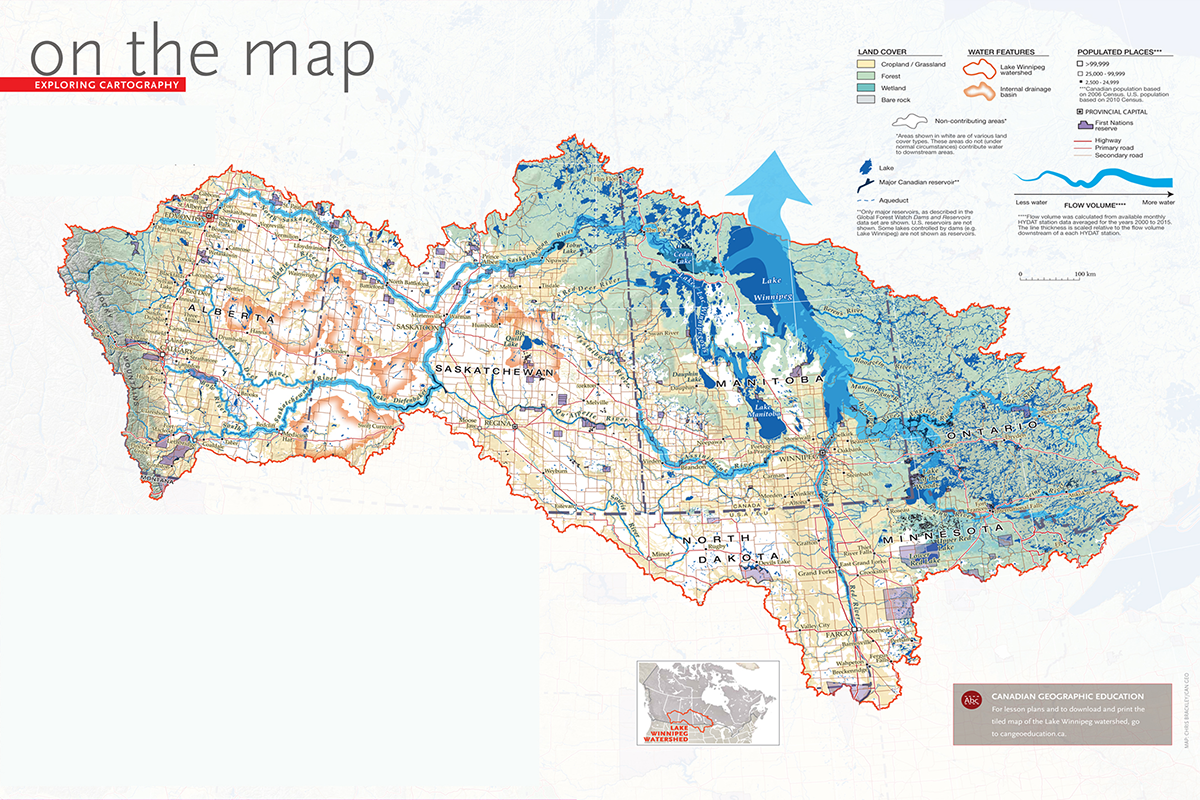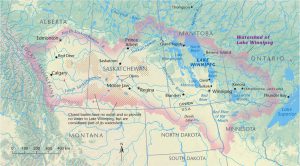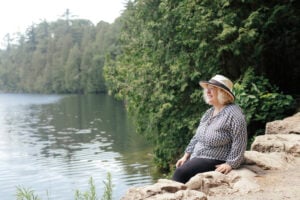
People & Culture
In search of promised lands
Uprooted repeatedly by development projects, the Oujé-Bougoumou Cree wandered boreal Quebec for 70 years before finding a permanent home. For some, the journey continues.
- 7148 words
- 29 minutes
This article is over 5 years old and may contain outdated information.
Environment

“There is no distinction between the water that flows down our drains and the water that flows through the lakes and rivers of the Prairies,” says Alexis Kanu, executive director of the Lake Winnipeg Foundation. “It’s water that connects all of us in the Prairie provinces.”
This is quite literally true. Rain and meltwater pouring out of the Rocky Mountains and flowing east through Calgary or Edmonton on the Bow and North Saskatchewan rivers — and perhaps through city plumbing before it exits the cities — can reach Lake Winnipeg, more than 1,800 kilometres away, in as little as two to three weeks. After that it moves north, ultimately mixing with the salt water of Hudson Bay.
The whole dynamic system is called the Lake Winnipeg watershed. It’s one of the world’s largest drainage basins, home to about seven million people and about the size of Spain and Sweden combined.
Kanu says Lake Winnipeg’s symptoms of recent years — algae blooms, beach closures, drinking water advisories and so on — indicate that many of the waterways leading to it are under strain. And because they originate in parts of Ontario, Manitoba, Saskatchewan, Alberta, Minnesota and North Dakota, it’s a problem that needs an international solution.
One crucial part of that solution is education. The map above for example, is part of a multi-year initiative called OPEN Water, which was designed to introduce the concept of watersheds as geographical boundaries (similar to ecozones or political borders) to K-12 students in Canada and the United States. Spearheaded by Canadian Geographic Education, the North Dakota Geographic Alliance and the Minnesota Alliance for Geographic Education, OPEN Water is a framework for learning about everything from invasive species to how human activities in Minot, North Dakota, or Calgary can affect the lives of people who depend on the same water several hundred kilometres away.
Through lesson plans and a large-scale “tiled” version of this map (funded by the Lake Winnipeg Foundation), soon available for downloading and printing, students can learn about the whole watershed in their classroom and then go out into the field to take part in hands-on citizen science.
Visit Canadian Geographic Education for lesson plans and to download and print the tiled map of the Lake Winnipeg watershed.
Are you passionate about Canadian geography?
You can support Canadian Geographic in 3 ways:

People & Culture
Uprooted repeatedly by development projects, the Oujé-Bougoumou Cree wandered boreal Quebec for 70 years before finding a permanent home. For some, the journey continues.

Environment
David Boyd, a Canadian environmental lawyer and UN Special Rapporteur on Human Rights and the Environment, reveals how recognizing the human right to a healthy environment can spur positive action for the planet

History
In 2006, Allan Casey wrote about Lake Winnipeg in Canadian…

People & Culture
The geology professor is a key mover and shaker in what is possibly the biggest geological announcement of our generation, with Ontario’s tiny Crawford Lake being chosen as the global ground zero Earth’s most recent geological time period